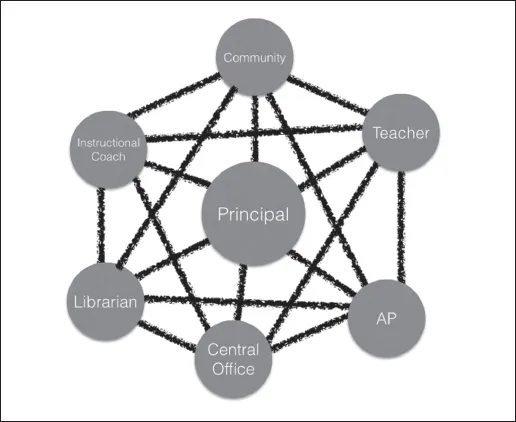![]()
BEING A “FLAT LEADER”
Optimizing Team Dynamics
Anyone who has been a principal or leader of a group or team knows that dynamics of a group can change as personalities change. Being a flat leader sometimes requires shuffling teams up a bit across the district. Since you are trying to start a new initiative or make it better, that also means making sure that the teachers who are comfortable integrating technology aren’t all on the same team. It’s a lot easier for a group to accept something if someone in their group is already a believer.
Hiring the Right Fit
Now that you’ve built your leadership team and started to re-arrange your group dynamics, you need to be keenly aware of those dynamics when hiring new staff. There is a misconception that younger staff or millennials will be able to integrate technology more easily than an experienced teacher will. Bear in mind that preservice university programs typically do not prepare teachers for schools that have a mobile device program. New teachers may be comfortable with technology, but don’t overlook older teachers who may have experience with 1:1.
Creating Avenues for Creativity
Most jobs in the world have some menial tasks that no one enjoys doing. When I spent a couple of years in the technology services department, it seemed that every time the phone rang, there was some sort of problem. No one called to tell us that the WiFi was running great. While I knew that our jobs were making a difference, it was not direct teaching, where you could see the change and growth of students.
Web of Communication
Finally, to make all of this work, you need a strong web of communication (Figure 1.1). In a hierarchal leadership model, there is a funnel of communication that slows the higher up the chain you go. If you create a flat leadership model, empower your staff, and give them multiple avenues to connect and communicate, things can happen much faster. While some things do need approval from the boss, creating this web means that whenever issues arise, the group as a whole will hear about them. Also, whenever ideas happen, they have many ways of accelerating from idea to action.
Figure 1.1 The web of communication.
![]()
TOP 10 THINGS NOT TO DO
1. Do Not Forget to Set Expectations
It’s amazing what a difference some minimal expectations have versus having none when it comes to staff using mobile devices for learning in their classrooms.
Figure 2.1 The SAMR swimming pool analogy was an idea that originated with Greg Garner’s take on Dr. Rubin Puentedura’s SAMR ladder.
2. Do Not Be Surprised by Resisters
Even staff that you have worked with for years and have built up great rapport with may see a change like a mobile device initiative as a challenge to their teaching style and pedagogical beliefs. The more successful the teacher, the harder they might be to change. After all, if they’ve been doing this teaching thing so well for so long, why should they change? While you might have the majority of your staff on board, you’ll still want to work with those who don’t see the value in the project by stressing to them that the goal is to improve student learning and success later in life. One value (I hope) that all your teachers share is that they want the best for their students. This can be a strong leverage point toward getting those resisters to change.
3. Do Not Pass Parent Concerns to the Technology Department
It’s tempting to blame the technology department for discipline or parent concerns. After all, the t...




